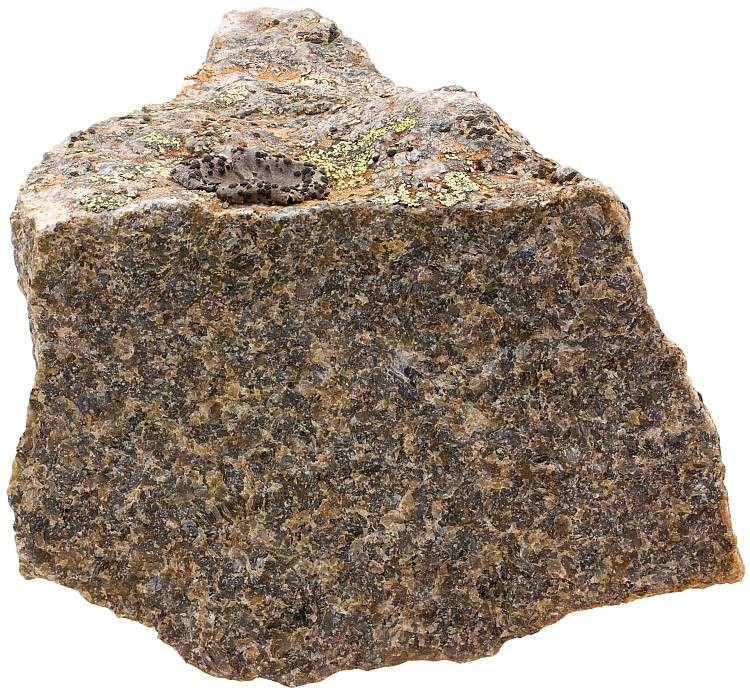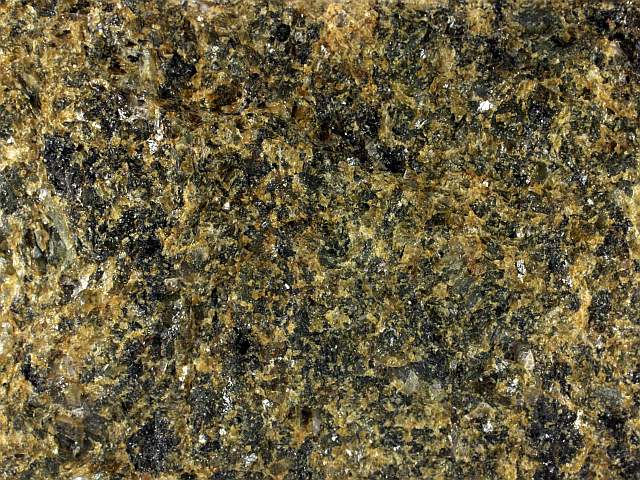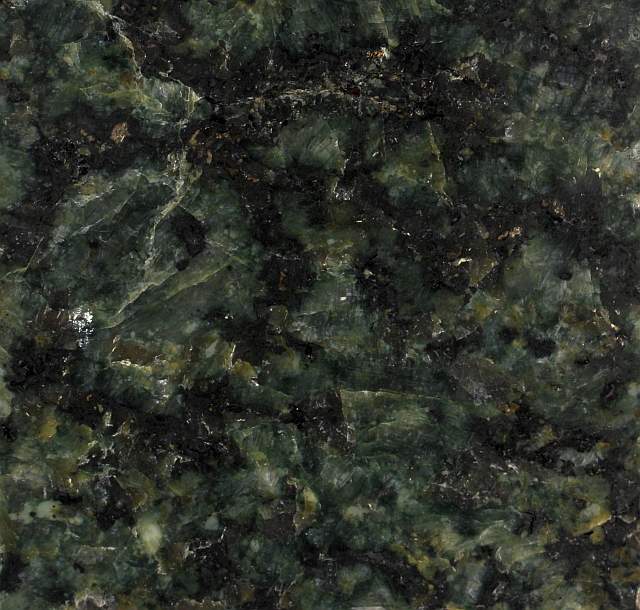Charnockite is a granofels that contains orthopyroxene, quartz, and feldspar. Charnockite is frequently described as an orthopyroxene granite. Granites are felsic rocks that usually contain no or very little pyroxene. There is actually an entire array of rocks (mostly granitoids but also syenite, monzonite, etc.) that may contain orthopyroxene plus quartz. These rocks are collectively referred to as charnockitic rocks or charnockitic suite. All of these rock names refer to igneous rocks which makes it very logical to assume that charnockite is just an igneous rock with a somewhat unusual composition.

Charnockite from Flakstadøya, Lofoten Islands. Width of sample 9 cm.
Such an interpretation (which seems to be prevalent) is very likely not true (at least not entirely). Igneous rocks are formed from magma, but charnockites are found in high-grade metamorphic terranes (granulite facies). The transformation from the protolith to charnockite had probably no magma phase, which means that in most cases we are dealing with true metamorphic rocks which have nothing to do with igneous processes. Charnockitic rocks are sometimes described as granulites, but this term seems to be somewhat out of favor nowadays. Partly because it may be confused with metamorphic facies with the same name and I also guess that partly because too many different rock types have been called that way which have created great deal of confusion in the past.
Well, can we conclude that charnockite isn’t a granite then? Perhaps we should, but we probably cannot do it because the term “granite” isn’t reserved exclusively for igneous rocks. Some rocks that have been described as granites are almost certainly metamorphic rocks, although they lack obvious foliation. Hence, we have to tolerate the situation that not all granites are igneous rocks and therefore we have no basis to demand that charnockite shouldn’t be named granite anymore. However, if we want to use metamorphic terminology, then we should call it granofels. Charnockite is coarse-grained, and it lacks foliation. This is the definition of granofelsic metamorphic rocks.
I have one more thing to say which disturbs me when it is said that charnockites have a granitic composition. Yes, they have according to the QAPF classification, but only because we do not use pyroxenes in this classification scheme.

Charnockite from Ubatuba, Brazil (known by its trade name Ubatuba Green). Width of view 10 cm.
Charnockitic rocks are commonly green. Both feldspars and orthopyroxene tend to have a greenish or brown hue and quartz crystals may contain rutile needles which gives them bluish tinge. Charnockites are formed at high pressures in almost water-free conditions. That’s why we see only small amounts of hydrous phases here (biotite, amphiboles) which are widespread in the rocks of amphibolite facies.
The name charnockite has an interesting origin. It was given to the rock type because it was first described as a tombstone of Job Charnock (1630–1692) in St John’s Churchyard in Calcutta (Kolkata). Job Charnock is known as the founder of the same city. Even today charnockite remains to be popular a tombstone material.

Charnockite from South Africa (known by its trade name Verde Fontaine). Width of view 7 cm.